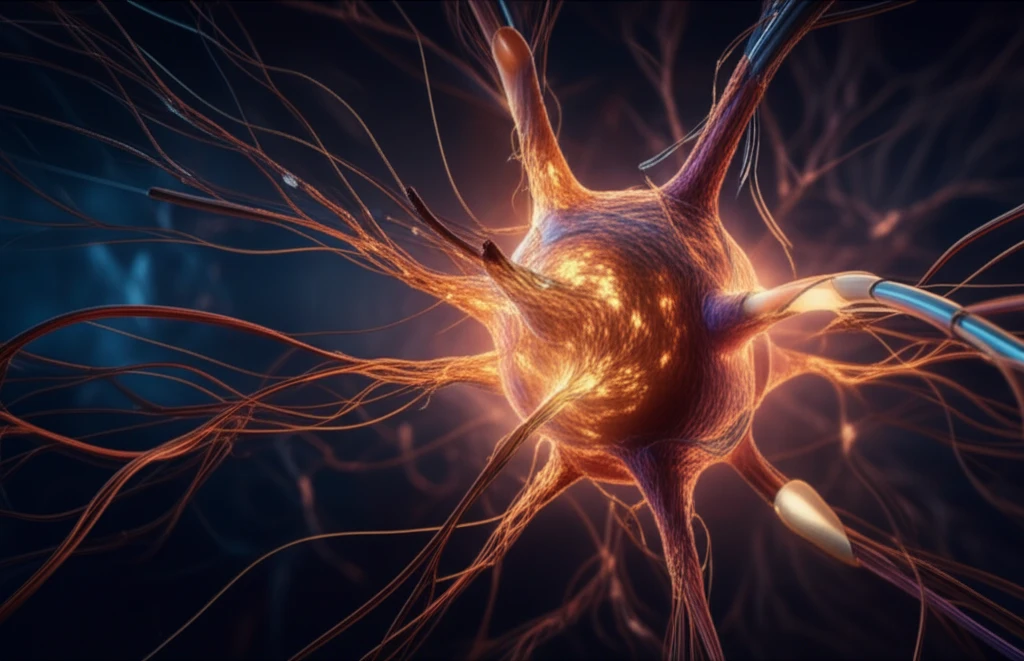
Unlocking the Mystery of Chemo-Induced Neuropathy: A Guide to Understanding and Managing Nerve Damage
"Explore the latest research, molecular mechanisms, and innovative treatments to combat chemotherapy-induced peripheral neuropathy (CIPN) for a better quality of life."
Chemotherapy, while a powerful weapon against cancer, often brings unwelcome side effects. Among these, chemotherapy-induced peripheral neuropathy (CIPN) stands out as a particularly burdensome challenge. CIPN involves damage to the peripheral nerves, causing a range of uncomfortable and often painful symptoms.
Imagine experiencing persistent tingling, numbness, or sharp pain in your hands and feet, making everyday tasks difficult. These symptoms can significantly impact your quality of life, affecting your ability to work, sleep, and enjoy time with loved ones. CIPN not only diminishes well-being but can also interfere with cancer treatment. In some instances, doctors may need to lower chemotherapy doses or even halt treatment altogether to manage the severity of CIPN, potentially compromising the effectiveness of cancer therapy.
The good news is that researchers are actively working to unravel the complexities of CIPN. By understanding the underlying mechanisms that cause nerve damage, scientists aim to develop more effective strategies for preventing and treating this condition. This article delves into the latest findings, offering practical insights and hope for those affected by CIPN.
What Causes Chemotherapy-Induced Peripheral Neuropathy?

CIPN arises from a complex interplay of molecular and cellular changes triggered by chemotherapy drugs. These drugs, designed to target rapidly dividing cancer cells, can also inadvertently harm healthy nerve cells. The damage occurs through various mechanisms, including:
- Disrupting Nerve Cell Function: Chemotherapy drugs can interfere with the normal electrical signaling within nerve cells by affecting ion channels.
- Neurotransmitter Imbalance: Critical chemical messengers that transmit signals between nerve cells, such as glutamate, norepinephrine, and serotonin, can be disrupted.
- Mitochondrial Damage: These are the powerhouses of cells. Chemotherapy can impair their function, leading to energy deficits and nerve damage.
- Inflammation: Chemotherapy can trigger an inflammatory response in the nervous system, further exacerbating nerve damage.
- DNA Damage: Chemotherapy can directly damage the DNA within nerve cells, impairing their ability to repair themselves.
The Future of CIPN Treatment: What's on the Horizon?
While CIPN remains a significant challenge, ongoing research offers hope for more effective treatments. Scientists are exploring a range of strategies to prevent and manage CIPN, including: -<b>Targeting specific molecular pathways:</b> Developing drugs that specifically block the damaging effects of chemotherapy on nerve cells. -<b>Neuroprotective agents:</b> Identifying compounds that can protect nerve cells from chemotherapy-induced damage. -<b>Non-pharmacological approaches:</b> Exploring therapies such as exercise, acupuncture, and nutritional interventions to alleviate CIPN symptoms. -<b>Personalized medicine:</b> Tailoring treatment strategies based on an individual's genetic makeup and risk factors.
